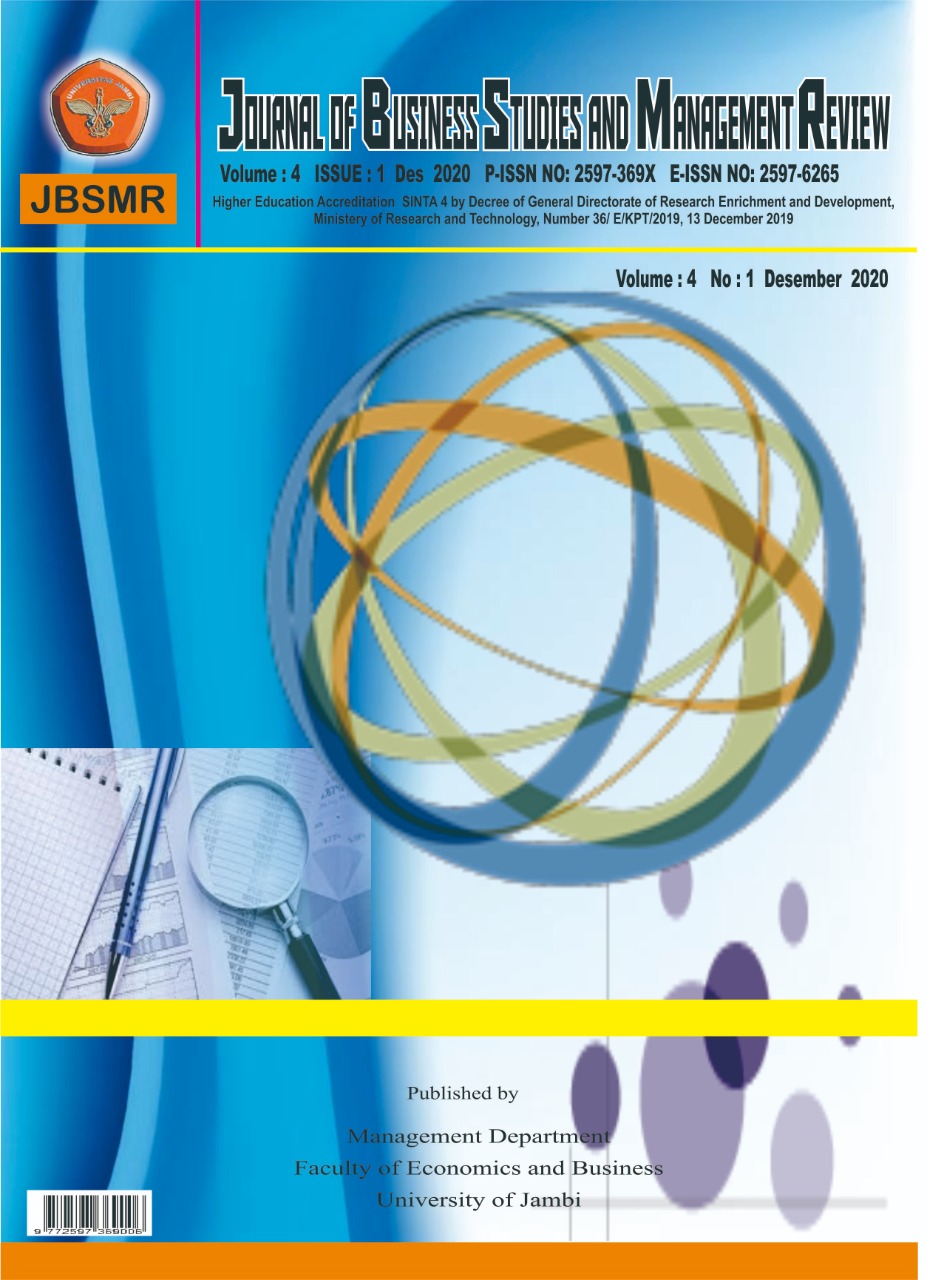THE EFFECT OF SERVICE QUALITY APPLICATION BASED OF CAPSULE TRANS BUS JAMBI CITY ON CUSTOMER LOYALTY THROUGH CUSTOMER SATISFACTION AS AN INTERVENING VARIABLE
DOI:
https://doi.org/10.22437/jbsmr.v4i1.10845Keywords:
: Service Quality; Customer Satisfaction; Customer Loyalty; Application basedAbstract
Digitalization in the transportation sector is a necessity. At the same time, several cities in Indonesia have already carried the concept of smart city. Jambi city government which launced the Kota Trans Capsule Bus, the first application based bus in Indonesia. The presence of the capsule bus is an innovation in public transportation with comfortable, modern, high technology and certainly supports Jambi as a smart city in Indonesia. The purpose of this study was to examine and analyze the effect of service quality application based of Capsule Trans City Bus on customer loyalty through customer satisfaction as an intervening variable. The analysis test tool used is SmartPLS v.3.3.0 and use the SEM (Structural Equation Model) analysis method. The results showed that the coefficient of indirect paths through the variable (I) customer satisfaction has a vue of 0.662 is greater than the path coefficient is 0.075. this means that the service quality of application based trans Jambi City Capsule Bus affect on customer loyalty but non diretly, namely through the intervening variable customer satisfaction. It means that customer satisfaction mediates between the influence of service quality on customer loyalty.
Downloads
Downloads
Published
How to Cite
Issue
Section
License

This work is licensed under a Creative Commons Attribution 4.0 International License.





.png)




